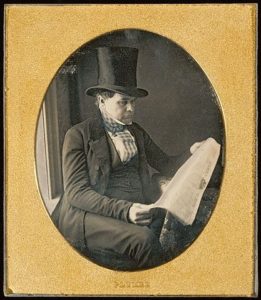Whether you write fiction or nonfiction, you must become something of an expert in the time, place, and people involved in your narrative. This means knowing some of the intimate details that make a scene or time period come alive. For that, I believe you have to be concerned with the trivial.
I remember reading a novel set in the Victorian era that mentioned–in mere passing–that the butler had ironed the newspaper to set the ink so his master’s fingers wouldn’t stain. What a fascinating detail about the materials of the period, the duties of servants, the luxury available to the upper class, etc.,–and all in one small snippet. Every novel needs these kinds of details, but I think that much of nonfiction needs them even more.
Most nonfiction writers get hold of an idea or event that fascinates them, and hope to stir the same passion in their readers. To do that, readers must become invested in the lives and events of the people studied. Details bring people and time periods to life. Of course you need to make sure you don’t bog down readers with a lot of meaningless detail that does no more than show you’ve done your research. But as you do that research, be sure to grab the little things that might catch your attention. Does a newspaper recount a terrible local tragedy, city event, horrific weather? Does it have advertisements for local businesses or talk about land transfers or social events? These things make places come to life.
Though your narrative will undoubtedly focus on major–and important–issues and people, glimpses into the intimate are also powerful. Make sure you can give that to your readers, and weave these little details into the story. They’ll remember everything else so much better for your effort.

